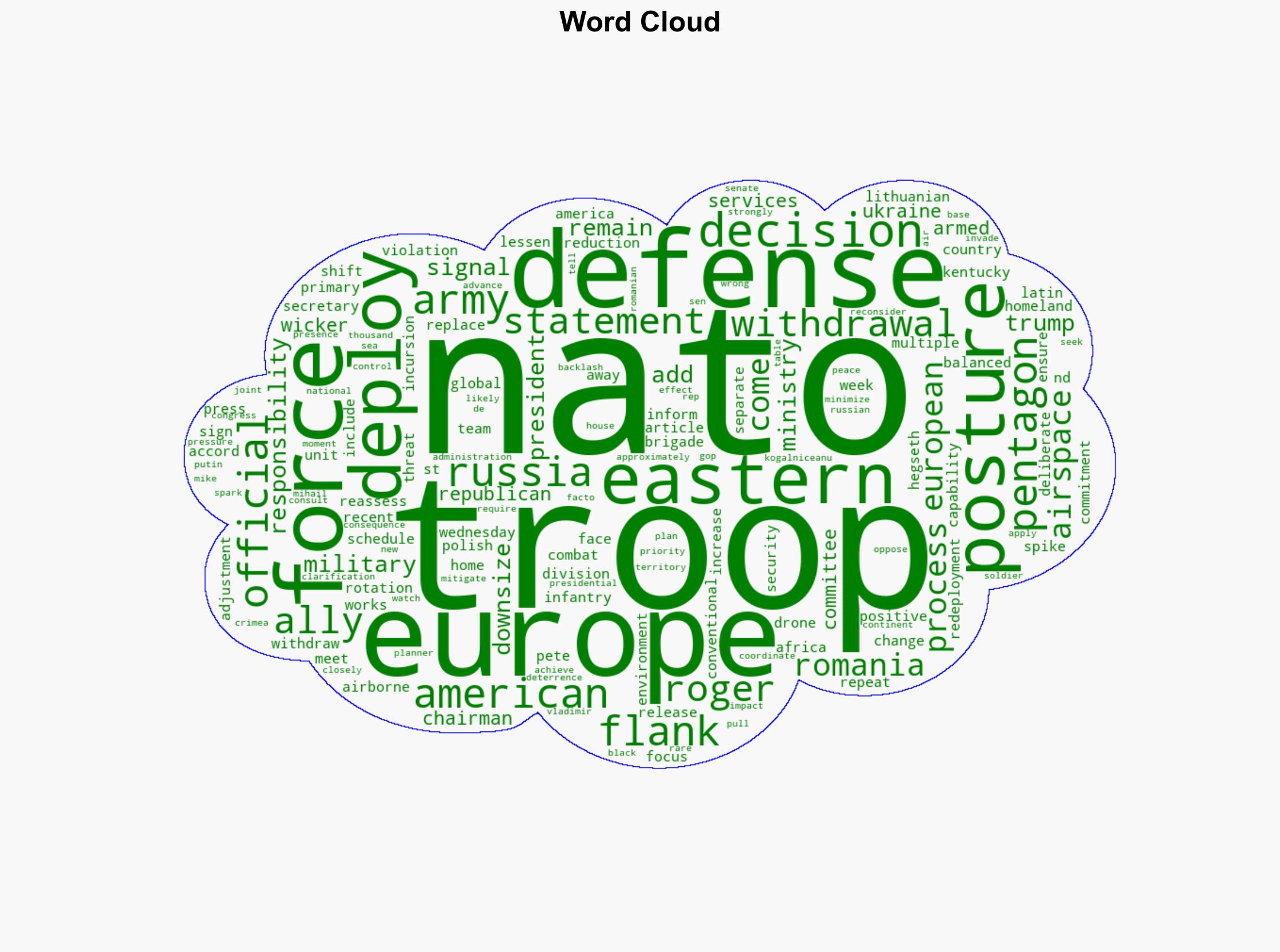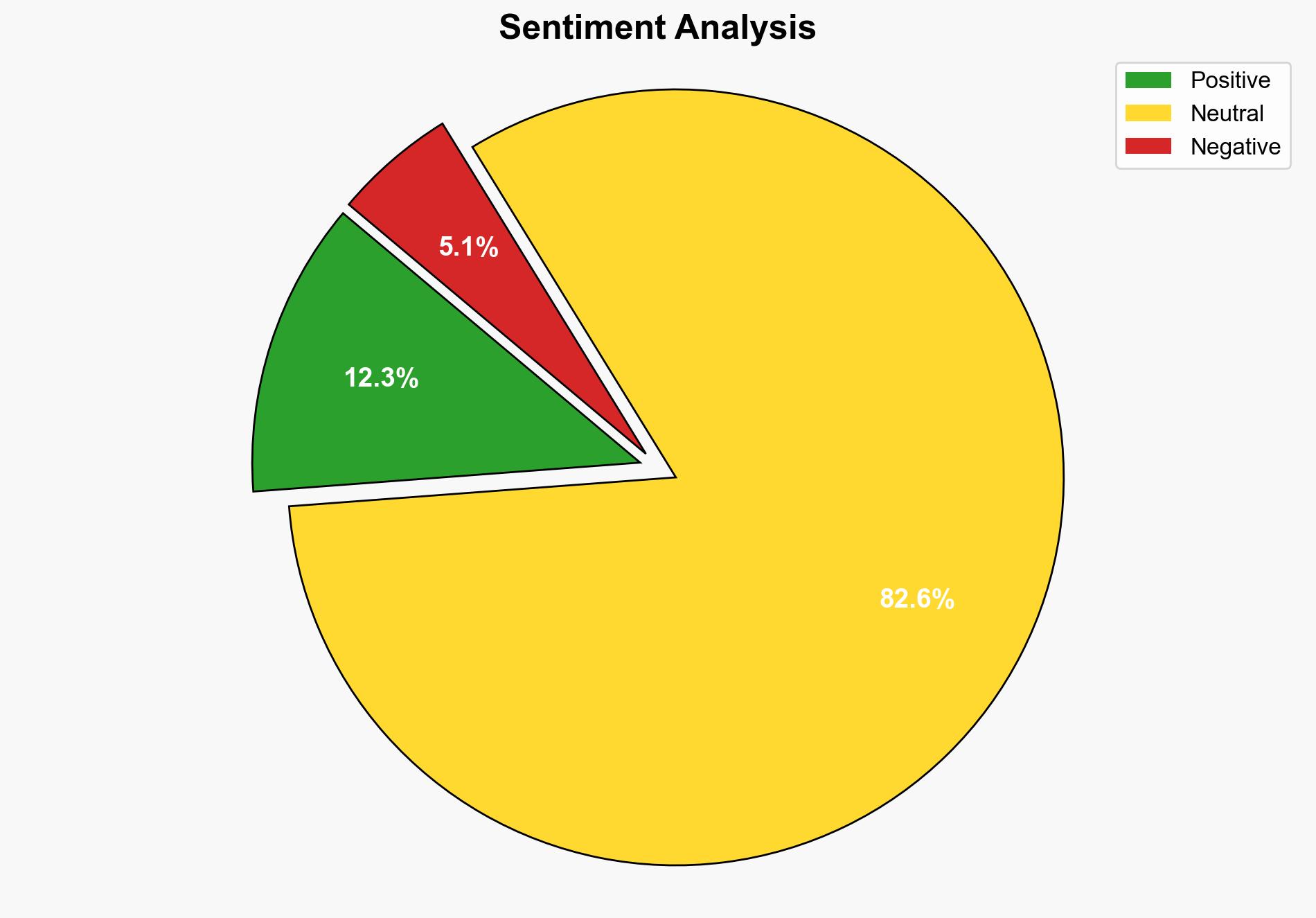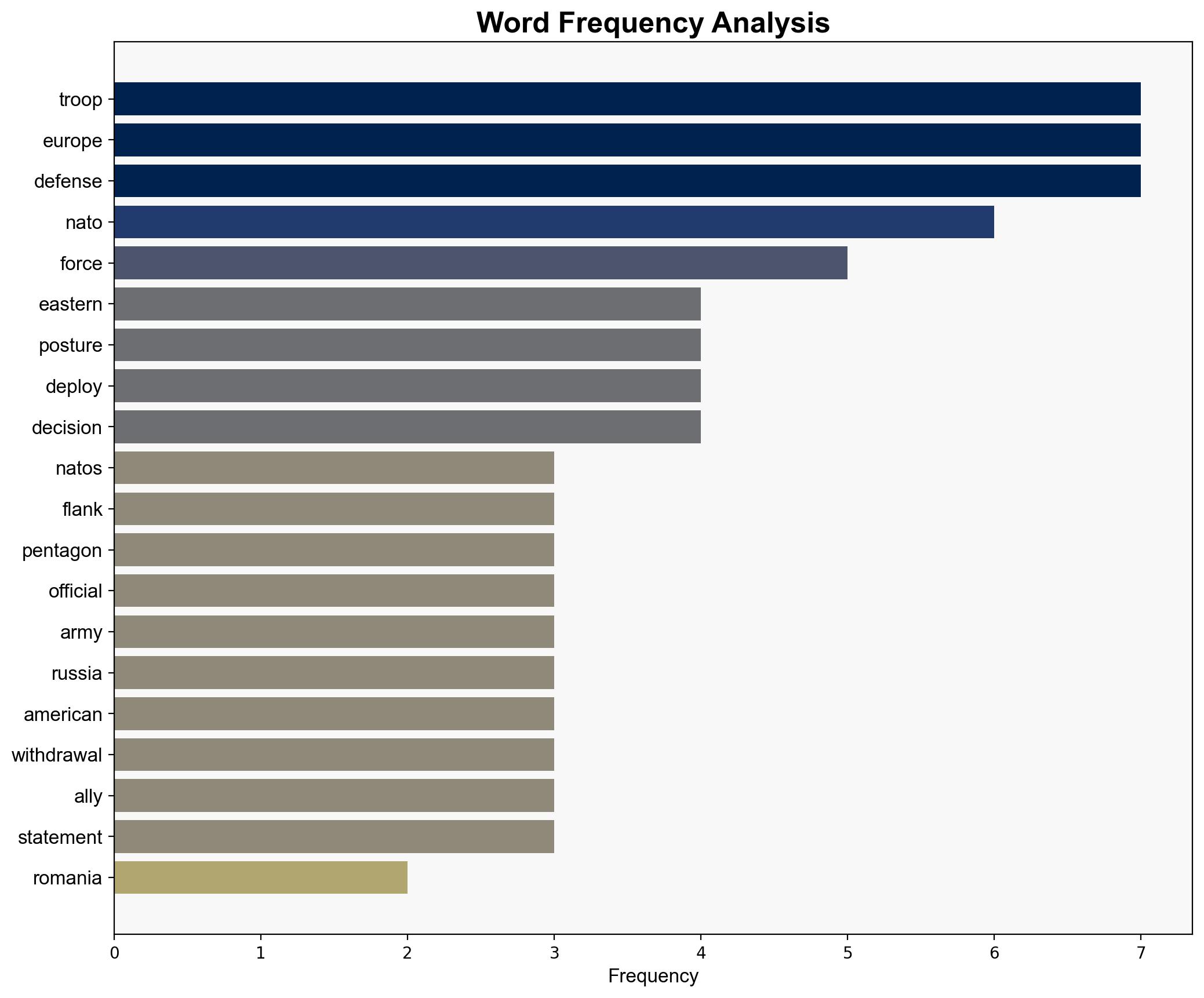US military withdrawing troops from Eastern Europe – CNN
Published on: 2025-10-29
Intelligence Report: US military withdrawing troops from Eastern Europe – CNN
1. BLUF (Bottom Line Up Front)
The strategic judgment, with a moderate confidence level, is that the US military withdrawal from Eastern Europe is primarily a strategic realignment to focus on other global priorities rather than a reduction in commitment to NATO. The most supported hypothesis suggests a shift in military focus due to evolving global threats. Recommended action includes enhanced diplomatic engagement with NATO allies to reassure them of continued US support and to coordinate any necessary adjustments in regional defense strategies.
2. Competing Hypotheses
1. **Strategic Realignment Hypothesis**: The withdrawal is part of a broader strategic shift by the US to focus on emerging threats in other regions, such as Latin America or Asia, while expecting NATO allies to assume greater responsibility for European defense.
2. **Political Signaling Hypothesis**: The withdrawal is a political maneuver to pressure European allies to increase their defense spending and capabilities, aligning with previous US administration policies to redistribute defense burdens within NATO.
3. Key Assumptions and Red Flags
– **Assumptions**: The US believes NATO allies are capable of enhancing their defense posture without compromising regional security. The shift in focus does not imply a reduced commitment to NATO.
– **Red Flags**: The timing of the withdrawal amid increased Russian activities could be perceived as a vulnerability. Lack of detailed communication and consultation with NATO allies may lead to misinterpretation of US intentions.
– **Blind Spots**: Potential underestimation of the immediate security vacuum created by the withdrawal and its exploitation by adversarial forces.
4. Implications and Strategic Risks
– **Security Implications**: Potential short-term reduction in deterrence against Russian aggression in Eastern Europe. Increased pressure on NATO allies to fill the gap.
– **Geopolitical Risks**: Risk of strained US-NATO relations if the withdrawal is perceived as a unilateral decision. Possible emboldening of Russian actions in the region.
– **Economic and Cyber Dimensions**: Potential for increased cyber activities targeting NATO infrastructure as a test of regional resilience.
5. Recommendations and Outlook
- Engage in diplomatic efforts to reassure NATO allies of continued US support and commitment.
- Coordinate with NATO to enhance regional defense capabilities and ensure a seamless transition.
- Monitor Russian activities closely to assess any changes in their strategic posture.
- Scenario Projections:
- **Best Case**: NATO allies successfully adapt to the new defense posture, strengthening regional security.
- **Worst Case**: Russian aggression increases, exploiting perceived NATO vulnerabilities.
- **Most Likely**: NATO adjusts its defense strategy with increased European contributions, maintaining a balanced deterrence posture.
6. Key Individuals and Entities
– Pete Hegseth
– Roger Wicker
– Mike Rogers
7. Thematic Tags
national security threats, geopolitical strategy, NATO relations, regional defense realignment





